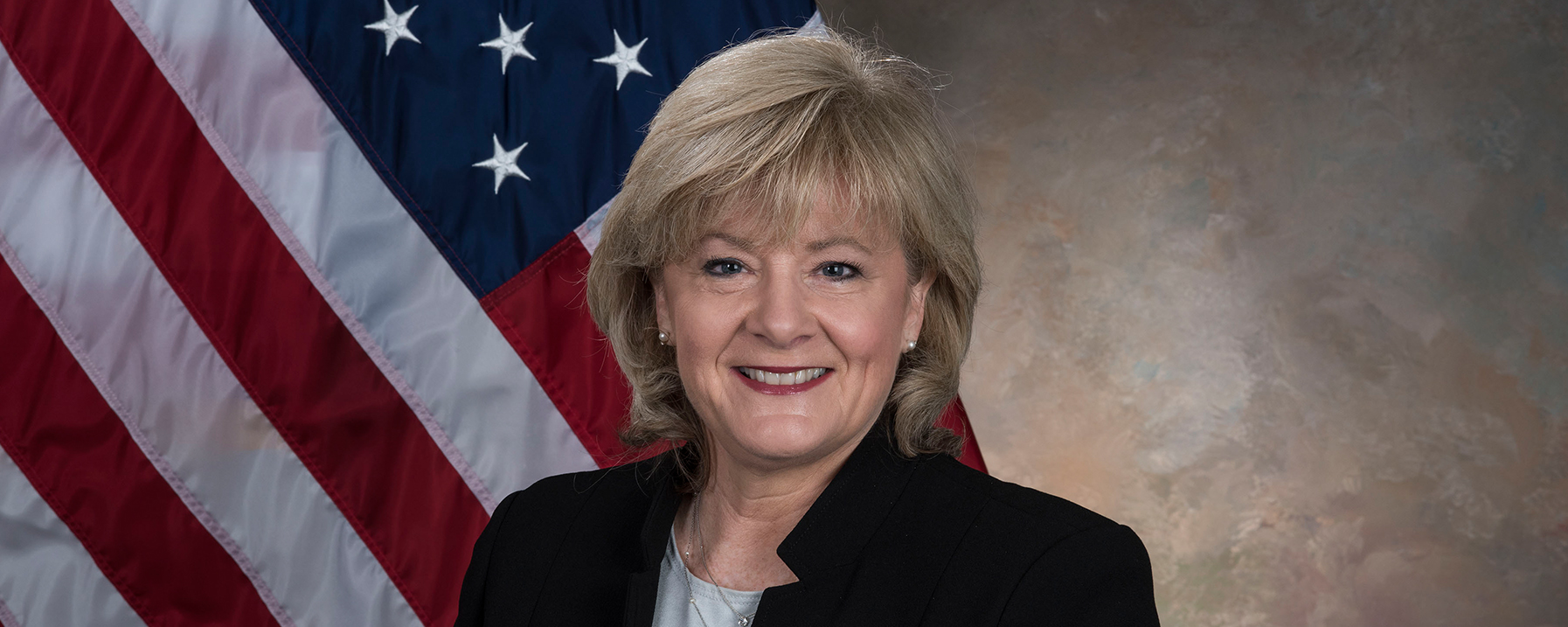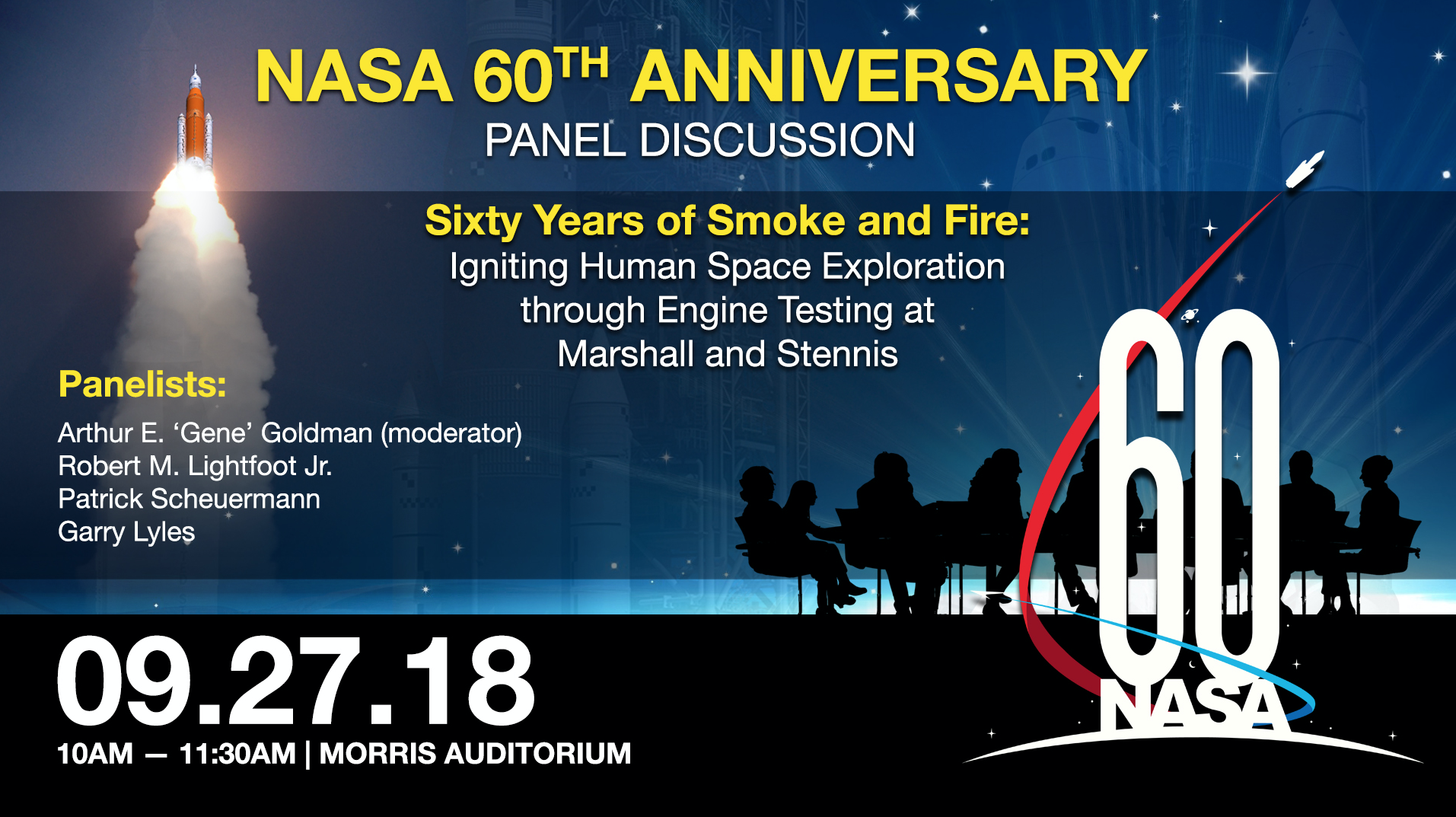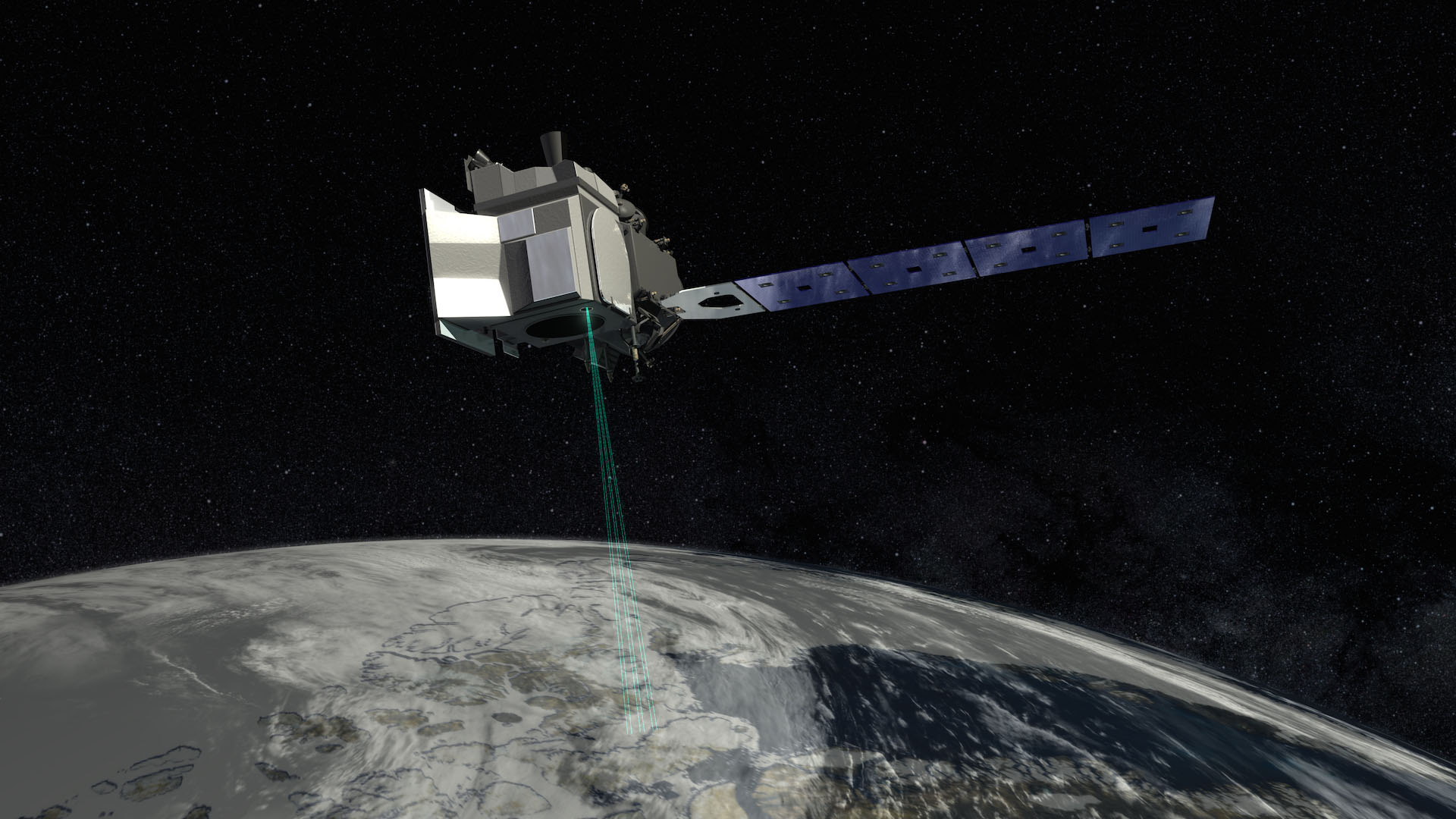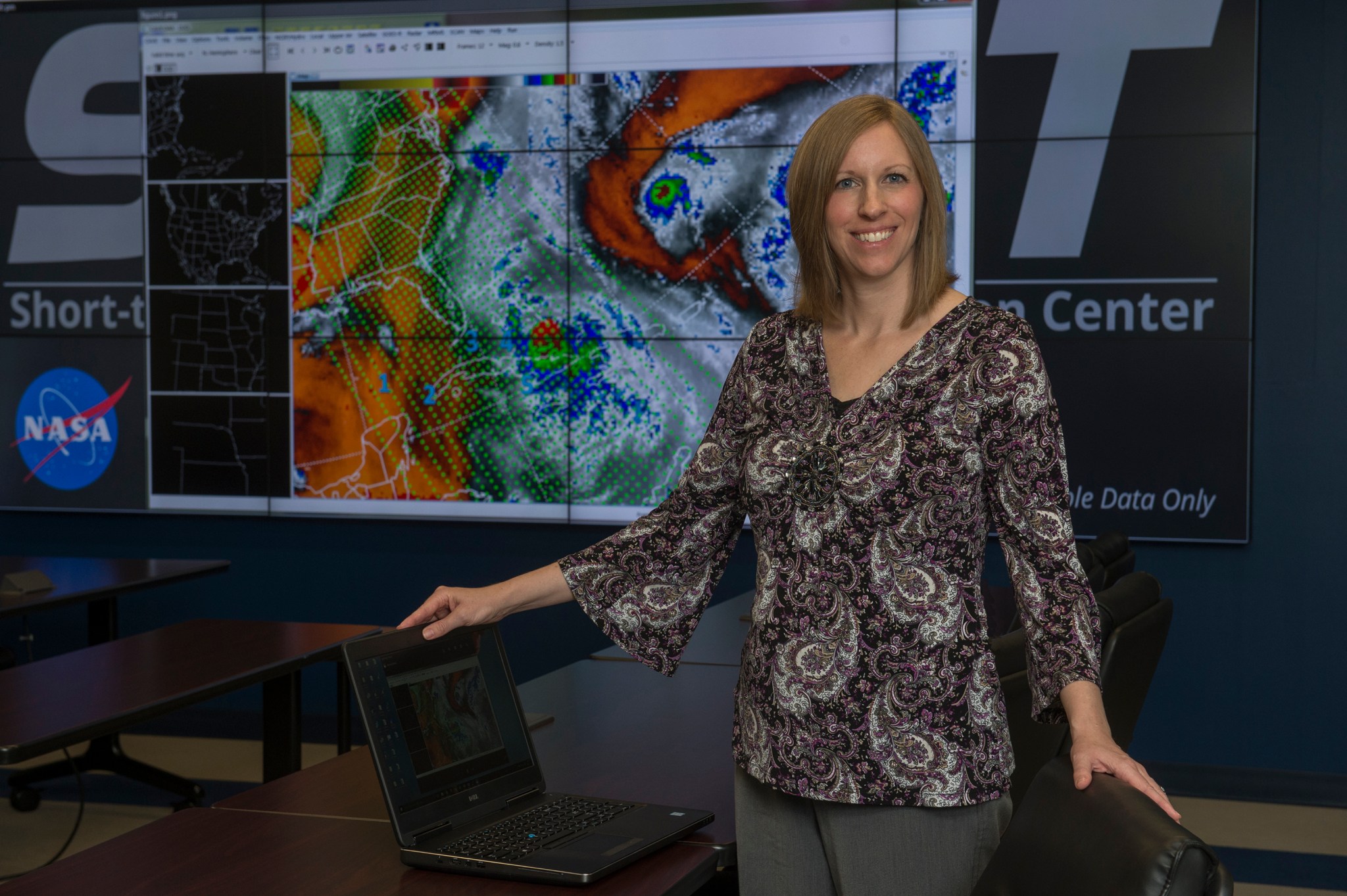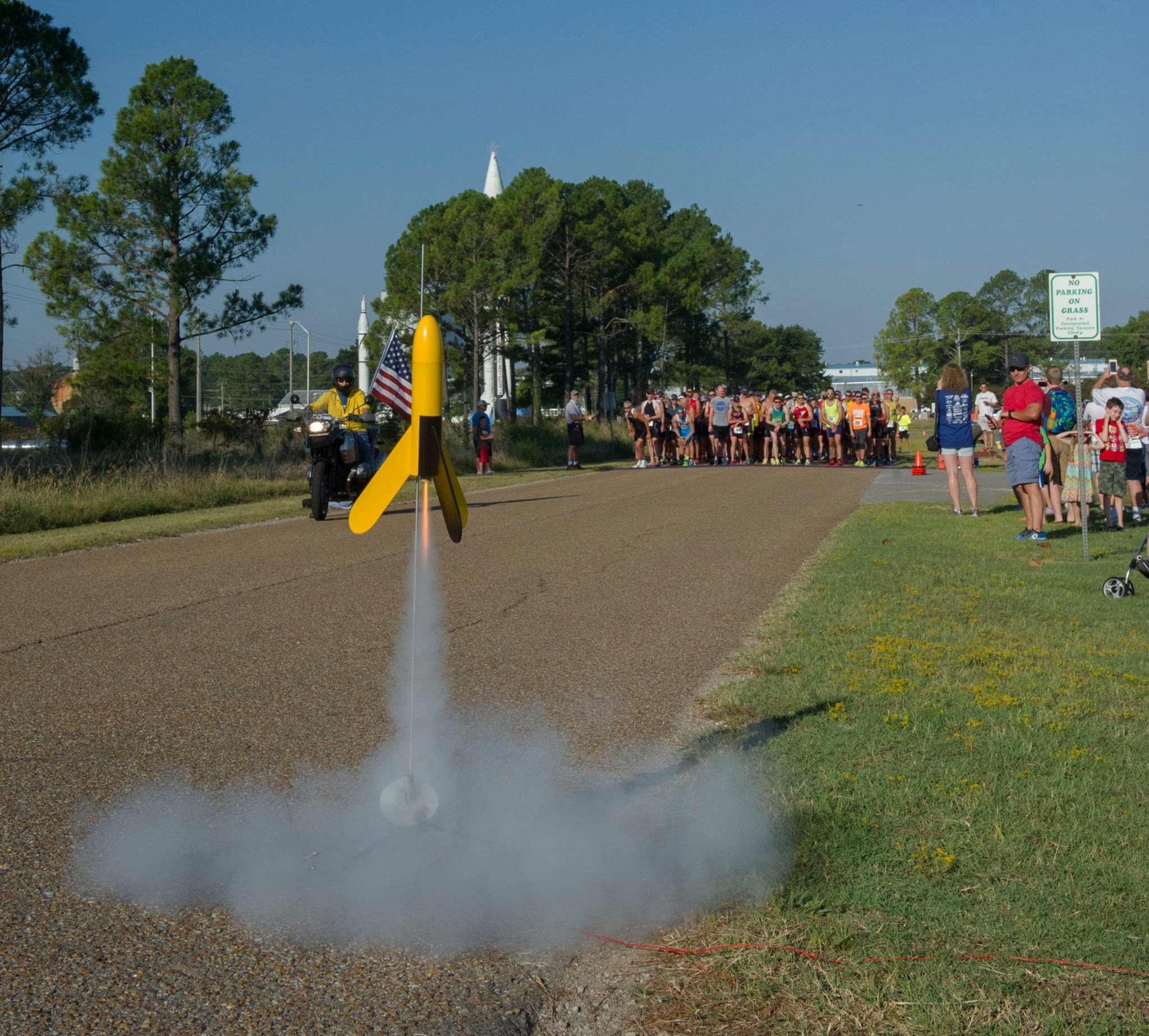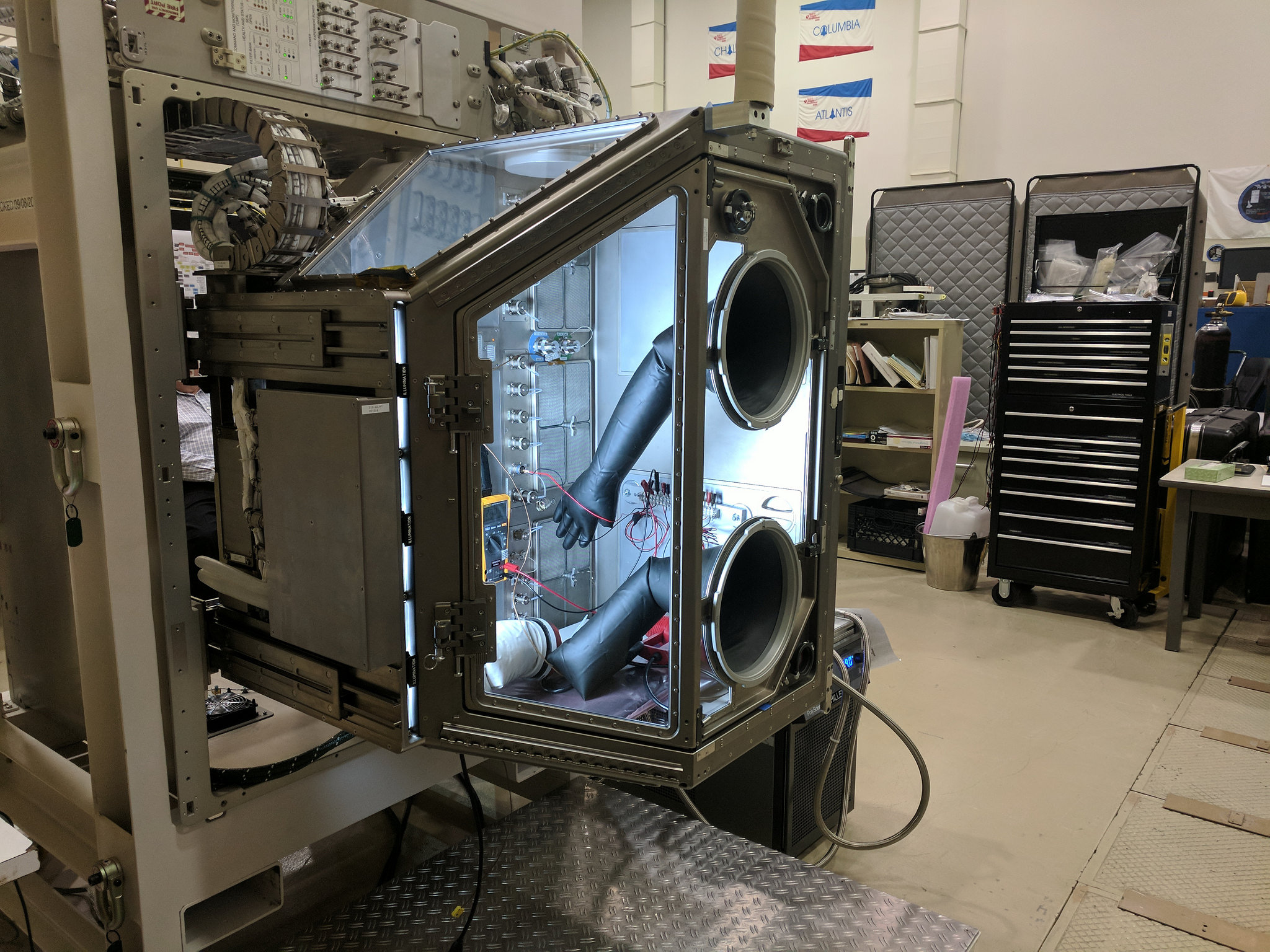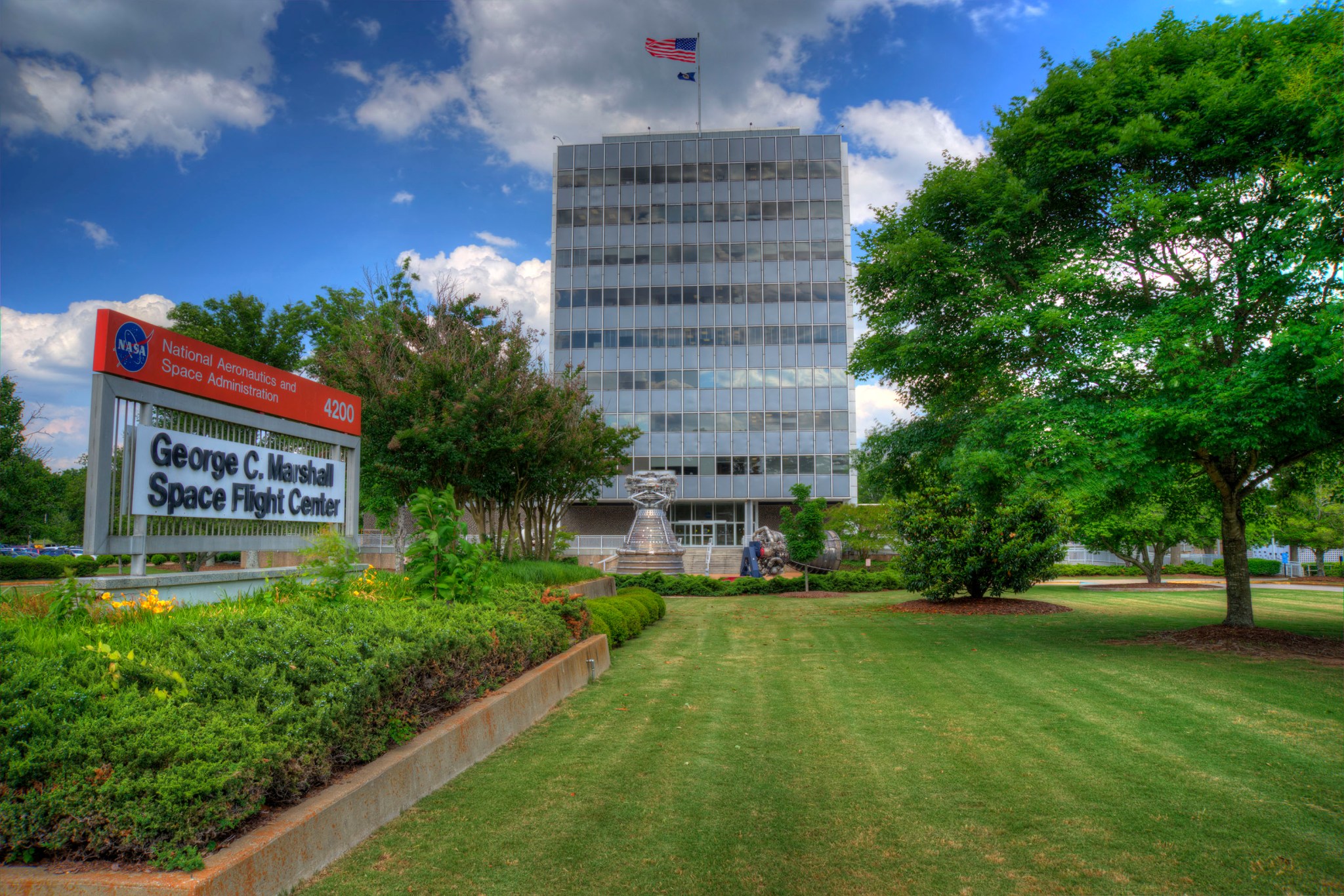In This Week’s Star
- Jody Singer Named Director of NASA’s Marshall Space Flight Center
- Marshall Center Director Jody Singer to Hold All-hands Meeting Sept. 24
- NASA History Panel to Discuss Agency’s 60th Anniversary
- NASA’s ICESat-2 Launches; Data to be Used by SPoRT to Improve Forecasting in Alaska
- Athletes Prepare for Racin’ the Station at Marshall
- Rocket Science in 60 Seconds: A Look Inside the SLS Support Center
- NASA’s Life Sciences Glovebox Set to Launch to Space Station Sept. 21
- Marshall to Host Community College Students Sept. 25-28; Team Members Invited to Lunch With Participants Sept. 27
- New NASA Home & City Interactive Website Traces Space Back to You
- NASA Exhibits to be Featured at Decatur’s 3rd Friday Downtown Event
- This Week in NASA History: Flight of HEROES – Sept. 21, 2013
- Obituaries
Jody Singer Named Director of NASA’s Marshall Space Flight Center
NASA Administrator Jim Bridenstine has named Jody Singer director of the agency’s Marshall Space Flight Center. Singer, appointed Marshall deputy director in February 2016, has been serving as acting director since the July 27, 2018, retirement of then-center director Todd May.
As director, Singer leads one of NASA’s largest field installations, with nearly 6,000 on- and near-site civil service and contractor employees and an annual budget of approximately $2.8 billion.
“Jody’s deep management experience over three decades at the project, program and center levels will be a huge asset to Marshall’s critical work supporting NASA’s goals of returning to the Moon to stay,” said Bridenstine. “Her proven leadership abilities and close connections to Marshall’s work and the human spaceflight community made her the right choice to lead Marshall at this pivotal time.”
Over her 32-year NASA career, Singer has served in numerous leadership roles. In 2002 she was appointed to the Senior Executive Service, the personnel system covering top managerial positions in federal agencies. She began her career in 1985 as an engineer in NASA’s professional intern program.
Prior to becoming the deputy center director, Singer was the manager of the Flight Programs and Partnerships Office at Marshall from 2013 to 2016, where she held primary responsibility for the center’s work with human advanced exploration projects, science flight mission programs, technology demonstration missions, commercial crew, and International Space Station life support systems, research facilities, and payload operations.
“For me, it’s always been about the people. It’s an honor to lead Marshall Space Flight Center as we push the boundaries of human space exploration and shape America’s return to the Moon,” said Singer. “Marshall has unique capabilities and expertise that are critical to missions that will take humans deeper into the solar system than ever before.”
Her experience in human spaceflight includes 25 years working in the Space Shuttle Program where she was responsible for the development, testing, flight readiness, safety and performance of the propulsion elements: the external tank, solid rocket boosters and main engines. Her experience also includes the Return to Flight activities following the space shuttle Columbia tragedy, serving as the first female project manager for the Reusable Solid Rocket Booster Project Office and as deputy manager in the Space Shuttle Propulsion Office as it successfully completed its mission and retirement.
From 2010 through 2012, she held deputy positions for three concurrent programs, the Space Shuttle Program, Ares, and for the start-up of the Space Launch System (SLS). Singer has been recognized with numerous awards during her NASA career, including the NASA Outstanding Leadership Medal, the NASA Exceptional Service Medal, and two Presidential Rank of Meritorious Executive Awards, the highest honor for career federal employees.
Marshall Center Director Jody Singer to Hold All-hands Meeting Sept. 24
NASA’s Marshall Space Flight Center team members are encouraged to attend an all-hands meeting with Marshall Center Director Jody Singer at 1 p.m. Sept. 24 in Morris Auditorium, Building 4200. Singer will update the workforce about her vision for Marshall’s future.
Marshall team members unable to attend can watch the all-hands meeting live on Marshall Desktop TV. Singer will answer questions from the audience and questions submitted by email. You may submit questions securely from any computer or mobile device starting now and throughout the meeting.
To submit a question:
- Go to https://www.nasa.gov/townhall
- Click on Marshall Space Flight Center
- Click “+ Ask” or, if your question is already on the list, vote it up the list by clicking the arrow on the left
NASA History Panel to Discuss Agency’s 60th Anniversary
NASA Marshall Space Flight Center team members are invited to a panel discussion focusing on the agency’s 60th anniversary, Sept. 27 from 10 to 11:30 a.m. in Morris Auditorium. The theme will be “Sixty Years of Smoke and Fire: Igniting Human Space Exploration through Engine Testing at Marshall and Stennis.”
Panelists include former Marshall Center directors Robert Lightfoot Jr. and Patrick Scheuermann and NASA Space Launch System Program chief engineer Garry Lyles. The panel will be moderated by former Marshall Center acting director Gene Goldman.
Lightfoot served as NASA’s acting administrator from January 2017 through April 2018. Prior to being named acting administrator, he was NASA’s associate administrator, the agency’s highest-ranking civil servant, from 2012-17. From 2009-12, Lightfoot was director of the Marshall Center.
Scheuermann served as Marshall’s director from 2012-15, and was director of NASA’s Stennis Space Center from 2010-12. He was deputy director of Stennis from 2008-10.
Goldman, who will also moderate the event, served as Marshall’s deputy director from 2010-12 and was Marshall’s acting director from March 2012 to September 2012. From 2008-10, Goldman was director of Stennis.
Lyles currently serves as the SLS Program chief engineer at Marshall. His 42-year NASA career includes chief engineer of the Space Shuttle Main Engine Program and Advanced Space Transportation program manager.
President Dwight D. Eisenhower signed NASA’s founding legislation, the 1958 National Aeronautics and Space Act, on July 29, 1958. NASA considers its birthday to be Oct. 1, the day the agency opened for business.
From 2018 through 2022, NASA is marking a series of important milestones – the 60th anniversary of the agency’s founding by Congress in 1958 and the 50th anniversary of the Apollo missions that put a dozen Americans on the Moon between July 1969 and December 1972. Marshall will celebrate its own 60th anniversary on July 1, 2020.
A question-and-answer session will follow the discussion. To submit a question, click here. The event will not be broadcast on NASA or Marshall TV.
NASA’s ICESat-2 Launches; Data to be Used by SPoRT to Improve Forecasting in Alaska
By Amanda M. Adams
NASA’s Ice, Cloud and land Elevation Satellite-2, or ICESat-2 — launched Sept. 15 from Vandenberg Air Force Base in California — will provide scientists with height measurements that create a global portrait of Earth’s third dimension, gathering data that can precisely track changes of terrain, including glaciers, sea ice and forests.
Emily Berndt, research scientist for the Short-term Prediction Research and Transition Center, within NASA’s Marshall Space Flight Center, will be one of the first scientists to obtain data collected by ICESat-2 through the ICESat-2 Early Adopter program. Berndt and the SPoRT team will use the data from ICESat-2 to improve short-term weather forecasts in Alaska. Understanding the extent and depth of ice and snow is necessary to the mission of the National Weather Service in Alaska. Commercial fishing and offshore oil drive the economy, so accurate modeling and observation of sea ice extent and depth is needed to help ensure people make it home safely at the end of the work day.
“We are excited to participate in the ICESat-2 mission as an early adopter,” said Berndt. “We anticipate that the ice thickness products, used in late winter to determine the depth and extent of that winter’s ice, could aid forecasters in understanding whether the modeled ice and snow depth is indeed accurate for early spring melting that can result in significant downstream flooding.”
Other applications for the ICESat-2 data include calculating the changing ice sheets of Greenland and Antarctica, to investigate why, and how much, our planet’s frozen and icy areas are changing in a warming climate.
The satellite will also measure heights across Earth’s temperate and tropical regions, and take stock of the vegetation in forests worldwide. The mission will gather enough data to estimate the annual height change of Greenland and Antarctic ice sheets to within 4 millimeters – the width of a No. 2 pencil.
NASA’s Goddard Space Flight Center manages development of the ICESat-2 mission, including mission systems engineering and mission operations on behalf of the agency’s Science Mission Directorate. Goddard also built and tested the ATLAS instrument. The ICESat-2 spacecraft was built and tested by Northrop Grumman in Gilbert, Arizona. United Launch Alliance of Centennial, Colorado, provided the Delta II launch service. NASA’s Launch Services Program, based at Kennedy Space Center, was responsible for launch service acquisition, integration, analysis and launch management.
Adams, an ASRC Federal/Analytical Services employee, supports the Office of Strategic Analysis & Communications.
Athletes Prepare for Racin’ the Station at Marshall
By Will Bryan
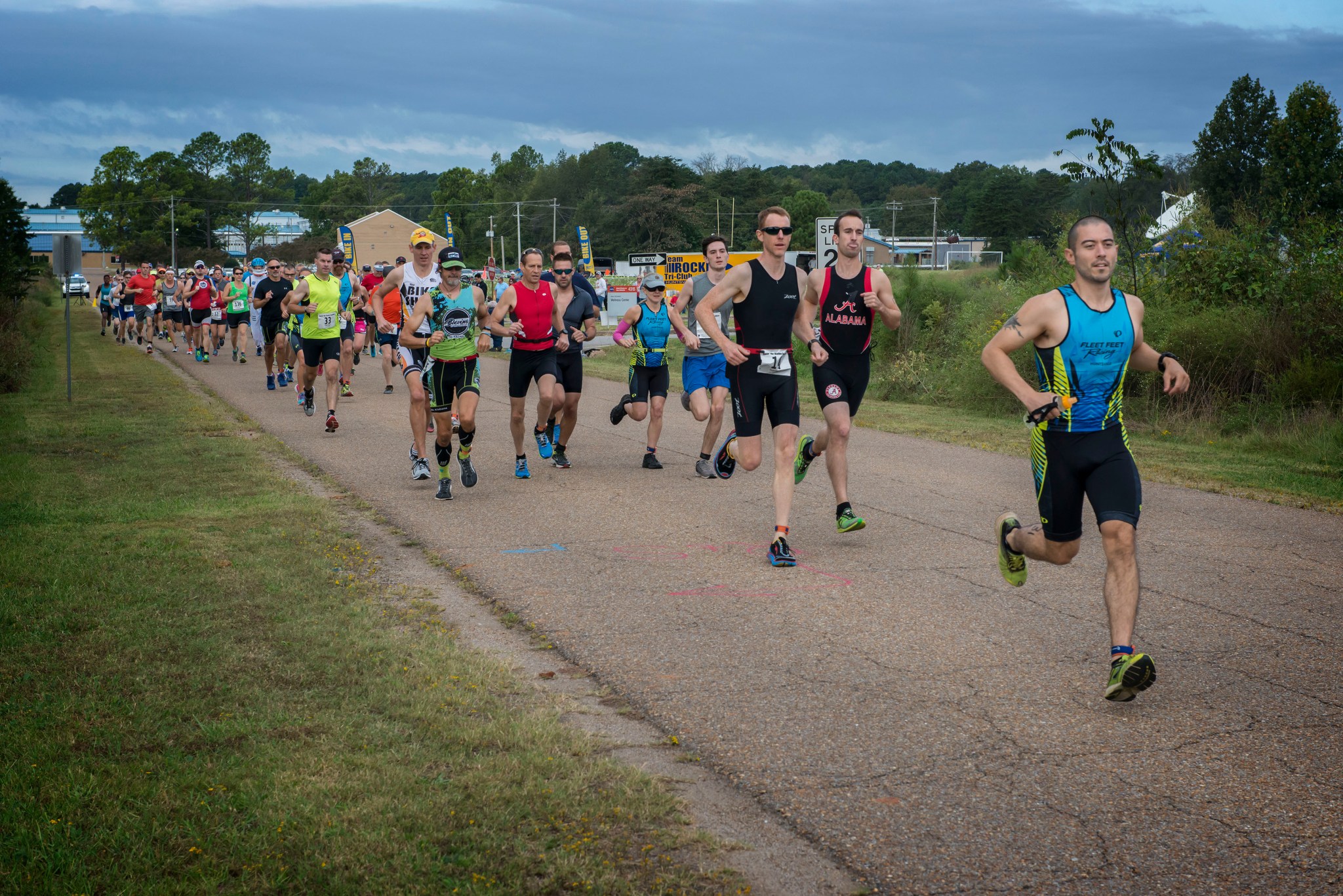
People have always been fascinated with racing and competing against machines. Going back to the legend of John Henry who famously raced a steam hammer only to win and then collapse, the challenge of beating a machine seems engrained in the human spirit. On Sept. 29, athletes will rendezvous at NASA’s Marshall Space Flight Center to race the International Space Station in the seventh annual “Racin’ the Station” duathlon.
For those with access to Redstone Arsenal, online registration is open through Sept. 27, and in-person registration will be available on Sept. 28 at Fleet Feet Sports in Huntsville. Those without access to Redstone must register online by Sept. 25.
The unique two-sport competition — which starts at 8:15 a.m. with a model rocket launch — challenges athletes to run 3.14 km before biking 23 km and finishing with one final 3.14 km run. Race organizers arranged the distance to coincide with the number pi or π, which is approximately 3.14. The goal is to complete the course before the space station completes one full orbit around Earth, which takes approximately 91 minutes.
“Racin’ the Station is unique because we are racing a fixed-timed event — that is the orbit of the ISS,” said Marshall’s Kent Criswell, the director of the event. “Not only are people pushing themselves physically as individuals, we are also honoring the six astronauts overhead who are benefiting humankind through new discoveries aboard the ISS.”
The race is designed for athletes of any ability. Participants can even form two-person relay teams, in which one does the running portions and a partner handles the cycling. The start and finish line for both the race and each leg of competition is at Marshall’s Wellness Center Building 4315.
Opening ceremonies will kick off the event at 7:45 a.m. at the Wellness Center. Exhibits from Marshall and other agencies on Redstone Arsenal — including the FBI — will be on display in Building 4316 throughout the event. Attendees will also have the opportunity to see a life-sized chalk rendering of NASA’s Space Launch System rocket in the Building 4316 parking lot. The race is officially over when the last person crosses the finish line. It will be followed by lunch and an awards ceremony at 11 a.m.
“Seeing people have fun and learn about the amazing work we do here at NASA and Team Redstone keeps me excited and fueled to do this year after year,” said Criswell. The event has grown each year, including to NASA’s Johnson Space Center that will host its first Racin’ the Station late this year. Criswell envisions a time when even more centers might host their own event, leading to a friendly center-to-center competition. “Maybe even astronauts on board could simultaneously race with us here on Earth as more centers pick up the event,” said Criswell.
The event is organized by the Team Rocket Triathlon Club in Huntsville and the Marshall Association, a professional employee service organization at Marshall whose members include civil service employees, retirees and contractors. Racin’ the Station is the primary fundraiser for the Marshall Association’s scholarship fund.
Volunteers are needed on Sept. 28 and Sept. 29. Anyone interested in volunteering should email Lara Gilbert.
For details on the race, visit the Racin’ the Station website.
Bryan, an ASRC Federal/Analytical Services employee, supports the Office of Strategic Analysis & Communications.
Rocket Science in 60 Seconds: A Look Inside the SLS Support Center
Rocket Science in 60 Seconds gives you an inside look at work being done at NASA to explore deep space. In this episode, Jennifer Vollmer takes you inside the Space Launch System Engineering Support Center located in the Huntsville Operations Support Center at NASA’s Marshall Space Flight Center. You’ll learn more about flight operations and how SLS experts will support the first launch from remote locations all over the United States. For more information about SLS, click here.
NASA’s Life Sciences Glovebox Set to Launch to Space Station Sept. 21
The Japan Aerospace Exploration Agency has rescheduled the launch of a cargo spacecraft from Japan’s Tanegashima Space Center to 1:15 p.m. CDT on Sept. 21. Live coverage will begin at approximately 12:45 p.m. on NASA TV and the NASA portal.
The HTV-7 transfer vehicle will deliver NASA’s new, state-of-the-art microgravity research facility, the Life Sciences Glovebox, to the International Space Station. NASA will provide live coverage of HTV-7’s arrival at the space station on Sept. 25 at 5:30 a.m. CDT.
The glovebox, which underwent final preparation and testing at NASA’s Marshall Space Flight Center, primarily will aid study of the long-term impact of microgravity on human physiology, revealing new ways to protect explorers in space and improve life on Earth.
Launch of the cargo craft previously was delayed by adverse weather conditions and technical issues. The transfer vehicle will deliver more than 5 tons of supplies, water, spare parts and experiments to the space station.
Learn more about the Life Sciences Glovebox here. Follow the latest space station news on Instagram and Twitter.
Marshall to Host Community College Students Sept. 25-28; Team Members Invited to Lunch With Participants Sept. 27
By Rick Smith
Thirty-six community college students from across the nation will visit NASA’s Marshall Space Flight Center Sept. 25-28 for a hands-on, career-focused educational workshop — and organizers hope Marshall team members will take part, helping to inspire tomorrow’s engineers and explorers.
The NASA Community College Aerospace Scholars program, now in its seventh year at Marshall, challenges students — most from minority-serving institutions — to complete a five-week, online course focusing on NASA’s missions, including science aboard the International Space Station and exploration of Mars. Students then are competitively chosen for the workshop based on their achievement in the online course.
The result, said Marshall education specialist Maria Chambers, is an authentic NASA experience for participating community college students pursuing undergraduate coursework in science, technology, engineering and mathematics — the STEM fields.
“The program encourages students to finish a two-year degree or transfer to a four-year university to pursue a NASA-related field,” she added. “By taking part in activities and presentations, touring Marshall and the U.S. Space & Rocket Center, and especially by mingling with NASA personnel, they may be inspired to pursue internships and even lifelong careers.”
The program will host a special networking lunch Sept. 27 from noon to 1 p.m. at the food truck corral on the corner of Martin and Rideout roads.
“We invite team members to come out and talk with the students over lunch, sharing their stories, answering questions and demonstrating that NASA careers are attainable, desirable and truly rewarding,” Chambers said.
The three dozen students set to attend the Marshall workshop are from 23 community colleges in Alabama, Arizona, California, Colorado, Mississippi and Texas. During their stay, they’ll work in four teams mentored by Marshall engineers. Each team will design and build its own prototype Martian rover — using Lego advanced robotics kits — and prepare a marketing package to formally present the design to NASA representatives at the close of the workshop. Participants also will take part in a pair of rover challenges, using their own creations to collect rock and mineral samples and rescue stranded Mars rovers.
The NASA Community College Aerospace Scholars program, administered by NASA’s Johnson Space Center and sponsored by the Minority University Research and Education Project, is organized by the Academic Affairs Office in Marshall’s Office of Human Capital. The program was founded at Johnson in 2012. Today, NASA hosts scholars workshops at all 10 field centers.
Smith, an ASRC Federal/Analytical Services employee, supports the Office of Strategic Analysis & Communications.
New NASA Home & City Interactive Website Traces Space Back to You
NASA studies our planet, Sun, solar system and beyond, but America’s space program is closer to home than you may think. You can find thousands of NASA-influenced technologies right in your backyard. A new interactive website, NASA Home & City, lets users explore how NASA impacts in everyday life.
NASA Home & City features about 130 spinoff technologies — including several from NASA’s Marshall Space Flight Center — in a virtual space, allowing users to tour buildings and rooms to discover common items that NASA inspired or helped improve. These spinoffs are commercial products that apply NASA technology originally developed for studying and exploring space.
“Our space technology continues to improve life on Earth,” said Jim Reuter, acting associate administrator of NASA’s Space Technology Mission Directorate. “NASA Home & City is a place of discovery for people, and especially students, who have ever wondered why space exploration should matter to them.”
The new website showcases only a small sample of NASA spinoff and dual-purpose technologies. Here are a couple innovations from Marshall featured on NASA Home & City that may surprise you:
- NASA helps protect buildings during earthquakes. Dampers that protected launchpad equipment when rockets fire now keep buildings from crumbling during earthquakes.
- NASA helps you breathe easy. A technology designed to help plants grow in space can neutralize bacteria, viruses and molds in your home or business.
NASA’s collaboration with commercial companies has helped bring space technology back to Earth for over 50 years. To explore more NASA spinoff technologies in your home and city, visit:
To learn more about NASA’s current space technology projects and missions, visit:
NASA Exhibits to be Featured at Decatur’s 3rd Friday Downtown Event
Exhibits from NASA’s Space Launch System will be among the many attractions at the “3rd Friday Downtown” event in Decatur, Alabama, Sept. 21 from 5–9 p.m.
Held every third Friday of the month from March 2018 to October 2018 in downtown Decatur, 3rd Friday Downtown is a large-scale block party featuring live music, arts and crafts, local food and children’s activities. The free event is between Decatur’s Bank Street and 2nd Avenue.
Both Bank Street and 2nd Avenue will be blocked off for traffic, but parking is available on adjoining streets and in downtown parking lots. NASA exhibits featured at the event include a 30-foot SLS inflatable, SLS models, a Life Sciences Glovebox demonstration and educational information about SLS and NASA’s Marshall Space Flight Center.
This Week in NASA History: Flight of HEROES – Sept. 21, 2013
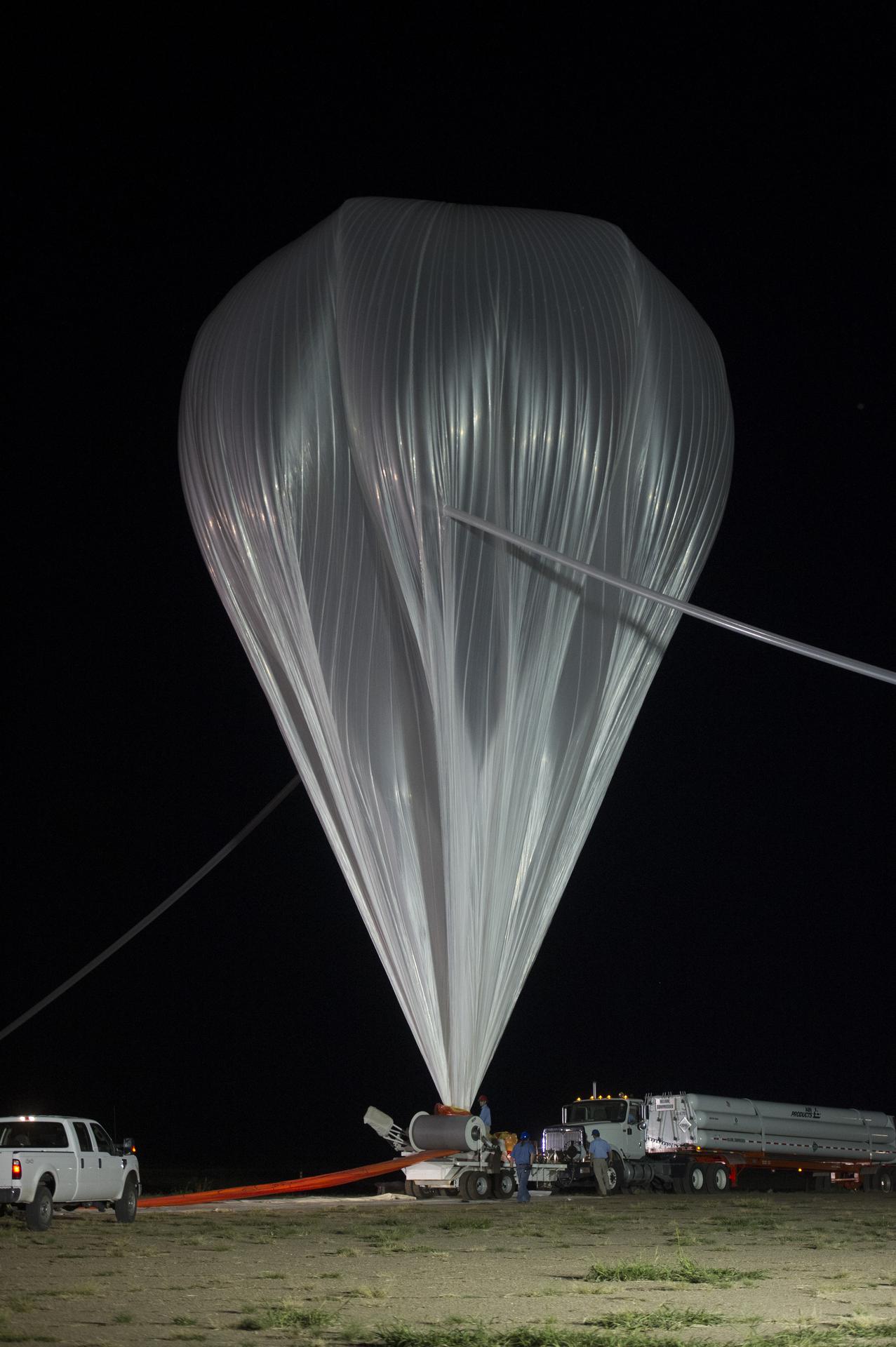
This week in 2013, the High-Energy Replicated Optics for Exploring the Sun, HEROES mission, a collaborative effort between NASA’s Marshall Space Flight Center and Goddard Space Flight Center, launched aboard the Columbia Scientific Balloon in Fort Sumner, New Mexico. An advanced version of NASA’s High Energy Replicated Optics telescope, HEROES was designed to investigate the scale of high-energy processes in a pulsar wind nebula by mapping the angular vortex of hard X-ray emission; the acceleration and transport of energetic electrons in solar flares using hard X-ray imaging spectroscopy; the hard X-ray properties of astrophysical targets such as X-ray binaries and active galactic nuclei; and electron acceleration in the non-flaring solar corona by searching for the hard X-ray signature of energetic electrons. Here, the HEROES payload awaits launch as the Columbia helium balloon inflates. The NASA History Program is responsible for generating, disseminating, and preserving NASA’s remarkable history and providing a comprehensive understanding of the institutional, cultural, social, political, economic, technological and scientific aspects of NASA’s activities in aeronautics and space. For more pictures like this one and to connect to NASA’s history, visit the Marshall History Program’s webpage. (NASA)
Obituaries
Herschel W. Belew, 91, of Huntsville, died Sept. 8. He retired from the Marshall Center in 1989 as a mechanical engineer.
Charles R. Darwin, 82, of Dadeville, Alabama, died Sept. 7. He retired from the Marshall Center in 1993 as director of program development.
Ernest O. Bayless, 80, of Petersburg, Tennessee, died Aug. 30. He retired from the Marshall Center in 1992 as an aerospace engineer. He is survived by his wife, Syble C. Bayless.
Erich L. McInnis, 91, of Decatur, Alabama, died Aug. 15. He retired from the Marshall Center in 1983 as an assistant executive officer.




























